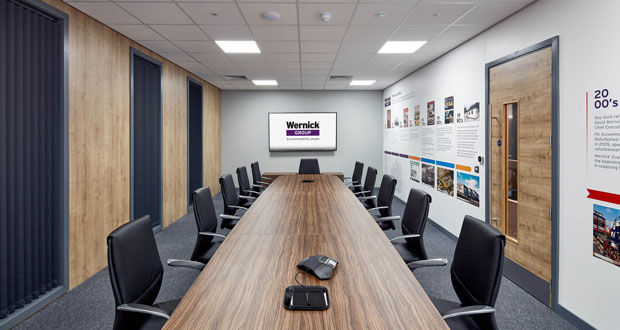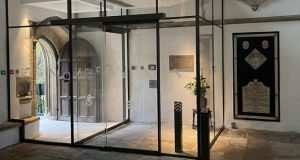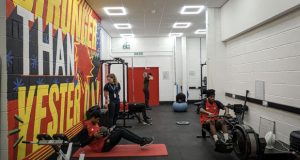Alexis Massey, Group Sustainability Manager at the Wernick Group shares how they eliminated 23% of their CO2 emissions in just four months.
Introducing the Wernick Group
We’re a family-owned business established in 1934, and provide permanent and temporary modular buildings, site accommodation and off-grid power solutions across the UK.
We recognise the climate emergency and our role to play within it, we have an ambitious target to reach net zero by 2040. A big part of this involves reducing our carbon emissions, and those of our suppliers and customers.
Plugging our energy leak
We recently built a sustainable head office in Wickford, integrating the technologies that we use within our modular buildings, including wall cladding, solar panels and LED lighting.
Despite having an ‘A’ EPC rating, we were still using around 20-30% more energy than expected and creating unnecessary CO2 emissions, especially on weekends when the site was unoccupied. Looking into this, we discovered monitors, laptops, chargers, and other devices were being left on outside of working hours.
So, we were keen to find an easy retrofit solution that would allow us to automatically eliminate this small power waste, without relying on our team to manually turn devices off.
When we came across the measurable.energy system, the machine learning stood out, especially the recommended rulesets – there’s nothing out there like it! The ability to switch equipment off and on was exactly what we were looking for and much more reliable than somebody on site doing it.
There was also the bonus of the LED light showing the carbon intensity of electricity being used – a great way to show our staff and clients exactly how we’re reducing our emissions!
“If you’re committed to achieving net zero, measurable.energy’s system is a dedicated tool to measure, identify, reduce emissions and prove that.”
Keeping our operation running
A key objective for us was to implement the system without affecting our day-to-day operations, minimising disruption to our 120 staff. So, our in-house electricians installed our sockets over the weekend when the site was unoccupied.
When the team came back in on Monday morning, everything was working as normal – and critically, our back office was functioning perfectly. The whole transition was very smooth and went by without anybody noticing – a huge win for us and our business continuity.
Measuring our energy waste
We spent the first couple of weeks baselining, to confirm how much energy we were using and the amount of carbon emissions we were generating. The results spoke volumes: we were using 20% more energy than expected during non-working hours.
Seeing a return on investment
After baselining, we implemented rulesets to turn off all devices from 6pm to 7am on weekdays, and always on weekends.
In just four months, we’ve achieved a:
- 20% reduction in energy use.
- 23% reduction in CO2 emissions.
Most importantly, the system has allowed us to evidence our reduction in carbon emissions and to keep these to minimum levels.
Spurred on for the future
We’ve been so impressed with the sockets that we’re installing them within selected hire cabins, passing savings directly onto our customers. As with most modular buildings, there are a lot of fused spurs ,so we’ve been working with the measurable.energy team to get these developed and added to their product range. We can’t wait to get our hands on them!
We also have plans to invest time educating our staff about the carbon intensity of the electricity they’re using, to promote behavioural change and reduce our emissions even further.
“You can design a super energy-efficient building but there will always be waste due to human behaviour, something measurable.energy’s system targets.”
 For more information visit https://measurable.energy
For more information visit https://measurable.energy
-ends-
The view or information contained within these unedited press releases, are that of the company producing it and not necessary the views of kpm.









